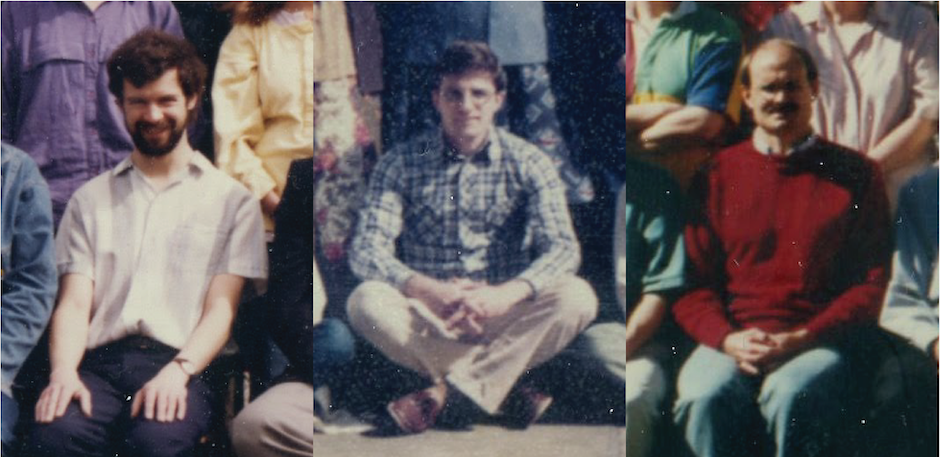
Iain, Alan and Sigurd in their first appearances in the Biochemistry Department photos. From left, Iain in 1988, Alan in 1982, and Sigurd in 1998.
The Department of Biochemistry marked the end of an era recently, holding a farewell dinner for three of its long-serving academic staff.
Professor Iain Lamont, Associate Professor Alan Carne and Associate Professor Sigurd Wilbanks have been central members of the Department since the 1980s and '90s, each looking after thousands of students over the years – both undergraduates in lectures and labs, and postgraduates as part of their research groups.
They have all been much appreciated in their multiple roles as researchers, lecturers, supervisors, mentors and administrators, and as approachable, considerate colleagues, a pleasure to work alongside.
The dinner was held at Plato, a quirky restaurant by the harbour, offering a delicious menu with a choice of monk fish, salmon, pork sirloin, ribeye steak, and pumpkin and eggplant curry. In attendance was a sizeable crowd of past and present staff, and some enthusiastic postgraduate students.
The main event came between mains and dessert: the speeches. Catherine Day spoke about Iain, Sally McCormick about Alan, and Peter Dearden about Sigurd, with each ‘retiree’ responding in turn.
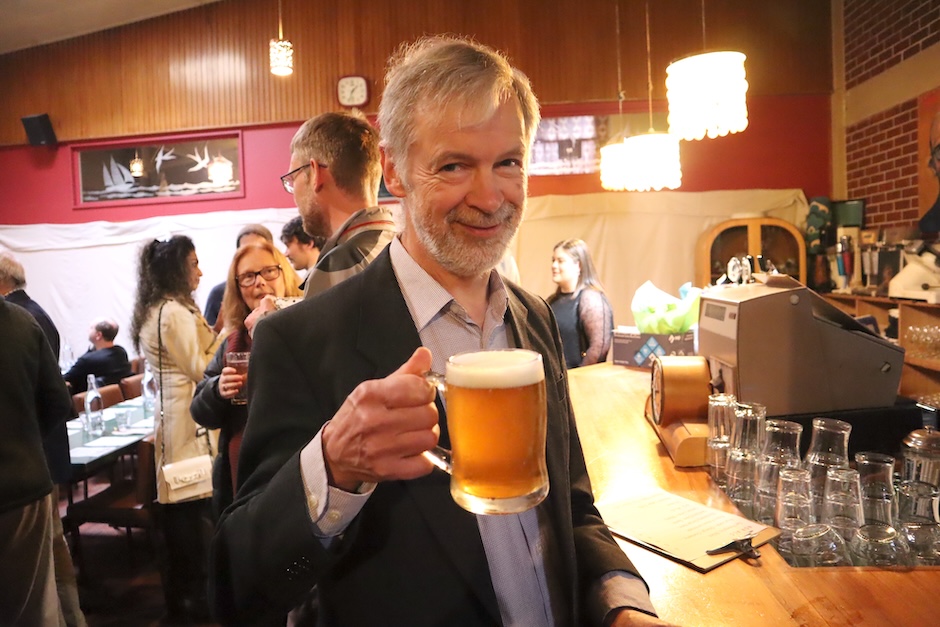
Iain Lamont raises his glass at the bar.
Iain had already given a wonderful speech the previous week at the Genetics Otago conference, summing up his research career. But Catherine filled in some more information on Iain’s career and time at the Department.
Originally from Scotland, Iain completed his PhD with Joel Mandelstam at Oxford and joined the Otago Department of Biochemistry in 1987 after a postdoc in Australia. Here he formed and maintained a vibrant research lab focused on the molecular genetics of Pseudomonas aeruginosa, a bacterium that infects the lungs of patients with pre-existing conditions such as cystic fibrosis or severe burns.
Out of many, many contributions to the Department and the University, some of particular note include chairing the University’s IBSC (Institutional Biological Safety Committee) board from 2003–2017, a time of great regulatory change in New Zealand science. He worked hard to make those regulations easier to work with for the researchers they affected. Also greatly appreciated is his contribution to the genetics programme, particularly early on; he led it for six years as director and is responsible for the name ‘Genetics Otago’.
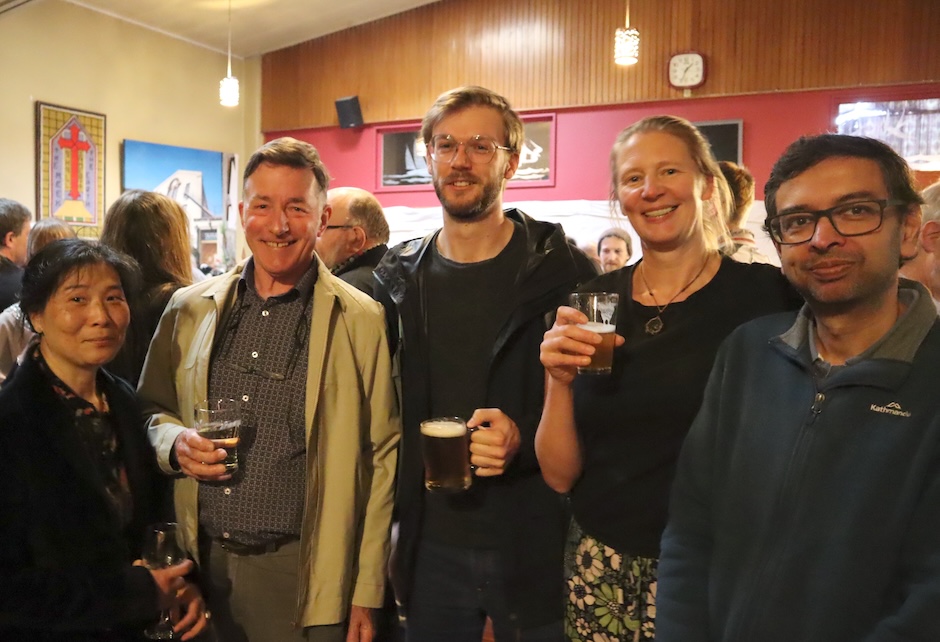
From left: Helen Opel-Reading, Alan Carne, George Randall, Katie Peppercorn and Abhishek Kumar.
Sally started her speech about Alan by declaring that he has been with the Department since 1882 (of course the date was actually 1982). Alan was born in the UK, but grew up in Taumarunui. He completed his PhD at Massey University and found himself a postdoctoral position in the prestigious laboratory of Nobel prize winner John Walker at the MRC Laboratory of Molecular Biology, Cambridge. After further postdoctoral work here at Otago Biochemistry, he was appointed as a lecturer in 1986.
He set up a research group focused on various protein-based research projects, particularly natural by-products or waste products of processing, such as milk cheese whey, meat and blood waste, and oilseed cake residue. Other projects have included characterising pigments from sea urchins and milk proteins from a variety of different species.
Alan was also key in setting up the protein chemistry unit, the precursor to the mass spectrometry unit now called the Centre for Protein Research. His 2D protein gels are apparently works of great beauty – no streaking, no blobs, just beautiful spots.
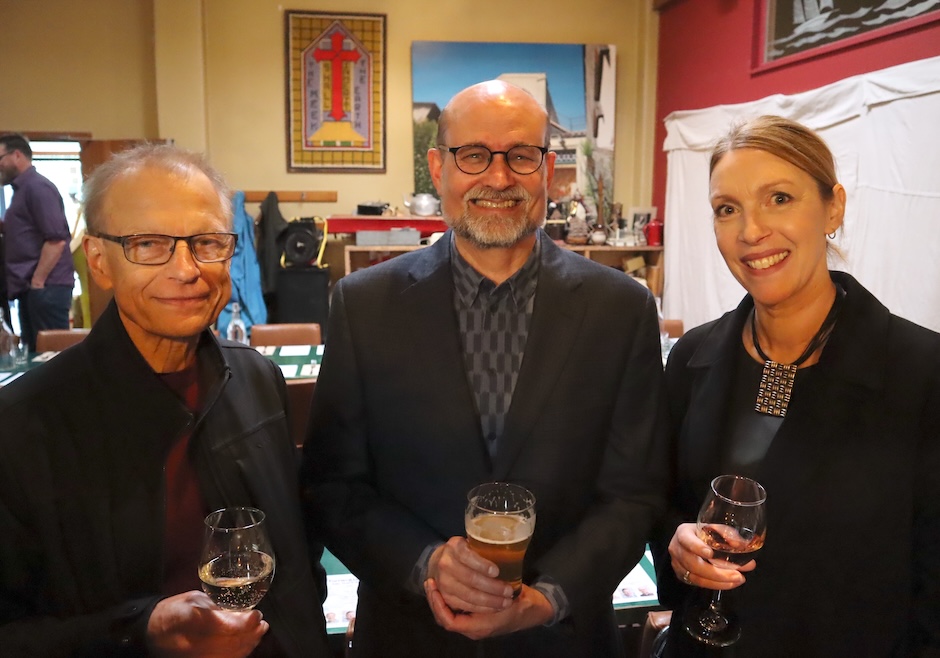
From left: Julian Eaton-Rye, Sigurd Wilbanks and Jackie Daniels.
Peter drew the audience’s attention to Sigurd and his unusual start, for a biochemist. His first degree, at Harvard University, was a bachelor of arts in Classics, specifically in Latin. He then made a remarkable change in direction to complete a PhD in Molecular Biology at University of California, Berkeley. Sigurd’s background in the arts is apparent when reading his scientific publications. Peter declared them to be “an example of how to write what effectively is a jewel. They are tightly written, and they are exquisite examples of the art”.
After Sigurd spent some time as a postdoctoral research fellow at Stanford University School of Medicine, he was offered positions at both Otago and a US biotech institution. Luckily for us he chose the option that took him far from family and US shores and bravely joined the Department in 1998.
Sigurd’s research over the years reflects his deep interest in how proteins work and his wonderful ability to collaborate with other researchers in the Department. His group has used a variety of biophysical techniques to study protein conformational changes and enzyme mechanisms, building an eclectic mix of study targets over the years, including molecular chaperones, splicing mechanisms for protein inteins, cytochrome c, cysteine dioxygenase, Wilms' Tumor 1 protein, and a component of photosystem II.
Iain and Alan both finish their current positions just short of Christmas, whereas Sigurd is cutting down his full-time job to part-time for six months before finishing entirely. Iain also plans on showing up to the Department for a while yet, as Emeritus Professor, tidying up research contracts and publications, and figuring out what he’d like to focus on next.
Having three important staff members leaving at the same time meant they shared the limelight at one big farewell event. But hopefully Iain, Alan and Sigurd leave knowing how much they are appreciated by the Department and how much they will be missed.
Good bye our friends. Good luck for the future!
Haere rā ō tātou hoa. Ngā mihi mō ngā tau kei mua i te aroaro!
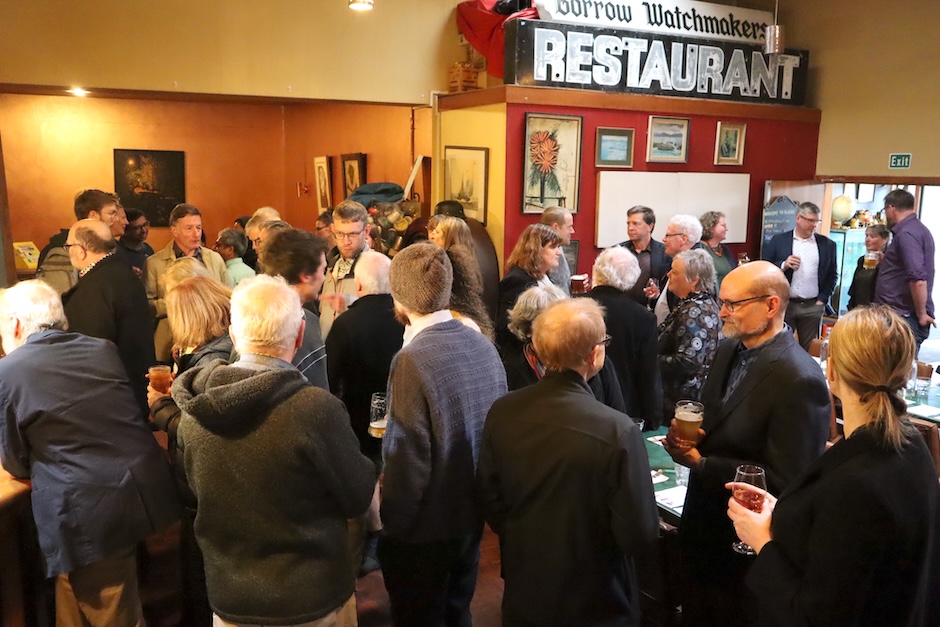
Some of the crowd attending the triple farewell dinner at Plato.
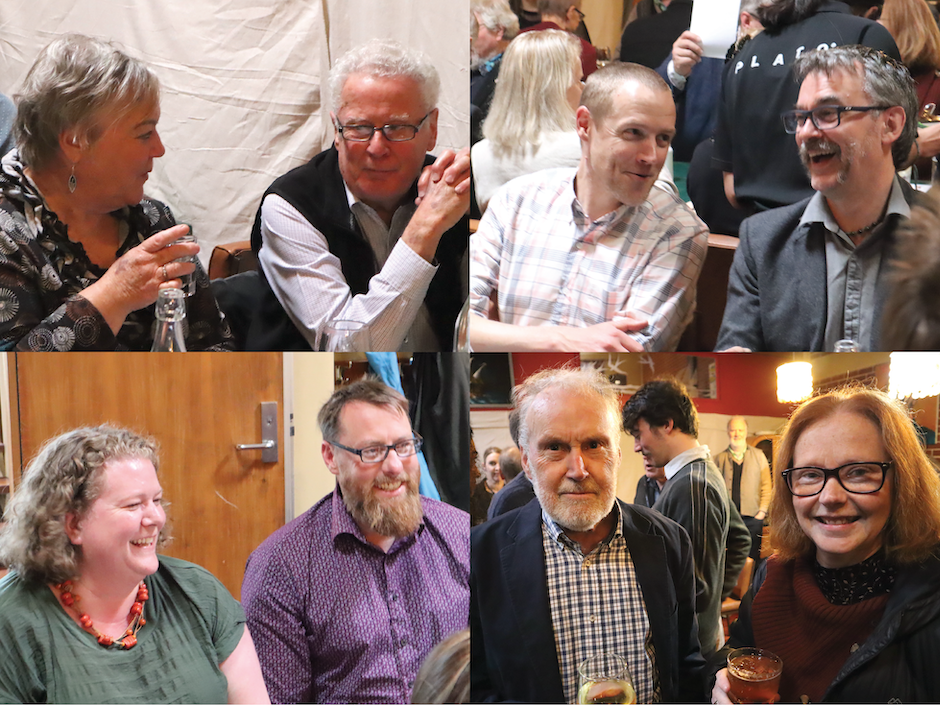
Past and present members of staff enjoy dinner, including (from left top, clockwise) Kaye Wilson, Kevin Farnden, Peter Mace, Mik Black, Steph Hughes, John Cutfield, Paul Gardner, and Louise Bicknell.